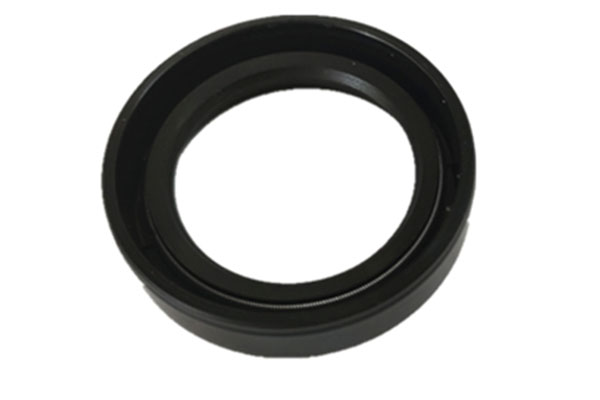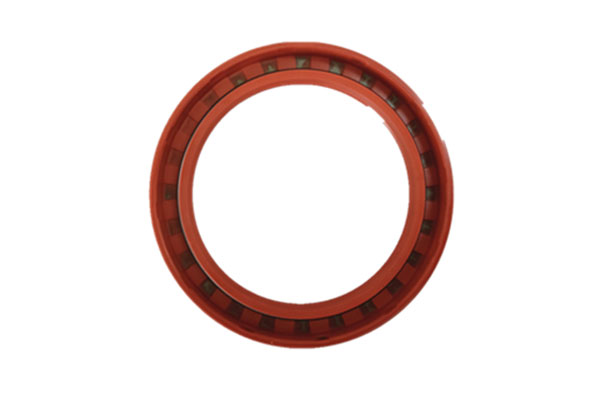Oil seals are vital components in vehicles, ensuring that lubricants stay where they’re needed while keeping contaminants out. In a typical car, oil seals are found throughout the engine, transmission, differential, and other critical systems. But how many oil seals does a car have, and why are they so important?
In this comprehensive guide, we’ll explain what oil seals are, how they work, and where they’re located in a car. By the end, you’ll understand the role of these small yet crucial components and how they contribute to the smooth operation of a vehicle.

What Is an Oil Seal?
An oil seal—sometimes called a shaft seal, radial lip seal, or grease seal—is a mechanical device that prevents oil and other lubricants from leaking out of a system. Oil seals also keep dirt, dust, and other contaminants from entering the system, which could otherwise cause wear and tear or failure of sensitive components.
Oil seals consist of three main parts:
- The outer casing: Holds the oil seal in place within its housing.
- The inner lip: The flexible sealing edge that rides against the shaft to create a tight seal.
- The spring: Keeps the inner lip under tension, ensuring a snug fit against the shaft.
Why Are Oil Seals Important?
Oil seals are essential for maintaining lubrication within rotating components such as engines, transmissions, and wheel hubs. Without oil seals, lubricants would escape, leading to increased friction, wear, overheating, and eventually, component failure. These seals also prevent external contaminants like dirt, water, and debris from entering and damaging internal parts.
How Many Oil Seals Does a Car Have?
The number of oil seals in a car depends on the vehicle’s design, type of engine, and other components, but on average, a car typically has 15 to 30 oil seals spread across various systems. Below is an overview of the key areas where oil seals are used in a typical car.
- Engine Oil Seals
The engine is the most crucial part of any vehicle, and it uses multiple oil seals to ensure proper functioning. Some of the most common oil seals found in the engine include:
- Crankshaft Oil Seal: The crankshaft oil seal is located at the front and rear of the engine. These seals prevent oil from leaking out where the crankshaft exits the engine block.
- Front Crankshaft Seal: Also known as the timing cover seal, this oil seal prevents oil from leaking out the front end of the engine where the crankshaft drives the timing belt or chain.
- Rear Crankshaft Seal: The rear main seal prevents oil leakage at the rear of the engine where the crankshaft connects to the transmission.
- Camshaft Oil Seals: If your engine has a camshaft or multiple camshafts, these oil seals are used to prevent oil leakage where the camshaft passes through the engine’s cylinder head.
- Valve Stem Seals: Valve stem seals are small oil seals that ensure the intake and exhaust valves are properly lubricated without letting excessive oil enter the combustion chamber.
- Timing Cover Seals: These seals are used to prevent oil leaks from the timing cover, which protects the timing belt or chain from debris and keeps it lubricated.
- Approximate number of engine oil seals: 5–8 seals.
2.Transmission Oil Seals
The transmission is another vital system that uses oil seals to maintain proper lubrication. Whether you’re driving a manual or automatic car, the transmission contains oil seals that keep transmission fluid contained while preventing contaminants from entering.

- Input Shaft Seal: This seal prevents transmission fluid from leaking where the transmission’s input shaft connects to the engine’s clutch or torque converter.
- Output Shaft Seal: Located at the rear of the transmission, the output shaft seal prevents transmission fluid from leaking as the driveshaft rotates.
- Shift Shaft Seal: In manual transmissions, the shift shaft seal ensures that no fluid escapes where the gear shift linkage connects to the transmission.
- Gearbox Oil Seals: Gearboxes, particularly in manual transmissions, also rely on oil seals to keep gear oil within the casing.
- Approximate number of transmission oil seals: 2–5 seals.
3. Differential Oil Seals
The differential, which is part of the drivetrain, allows the wheels of a vehicle to rotate at different speeds when turning. To maintain lubrication and prevent leaks, differentials use oil seals.
- Pinion Seal: This oil seal is located at the front of the differential, where the driveshaft connects. It prevents oil from leaking at this crucial point.
- Axle Seals: The differential has axle seals that prevent oil from leaking where the axle shafts exit the differential housing.
- Side Cover Seals: In some differentials, side cover seals are used to prevent leaks from the differential’s side covers.
- Approximate number of differential oil seals: 2–4 seals.
4. Axle and Wheel Hub Oil Seals
Axle and wheel hub oil seals ensure that the bearings in the wheel hubs are properly lubricated and free from contaminants. These seals are crucial in maintaining the vehicle’s handling and safety.
- Wheel Hub Seals: The wheel hub or axle bearings are protected by seals that prevent grease and oil from escaping and keep dirt and water from entering the hub assembly.
- Axle Oil Seals: Front and rear axles may also have oil seals where the axles connect to the wheel hubs or differential. These seals ensure that the axle shafts rotate smoothly while containing lubrication.
- Approximate number of axle and wheel hub oil seals: 2–6 seals.
5. Power Steering Oil Seals
The power steering system uses hydraulic fluid to make steering easier, and oil seals are used to keep the fluid within the system while protecting it from external contaminants.
- Steering Rack Seals: These seals prevent hydraulic fluid from leaking out of the steering rack assembly, ensuring smooth and controlled steering.
- Pump Shaft Seal: The power steering pump also contains a shaft seal that prevents fluid from leaking where the shaft connects to the engine’s belt system.
- Approximate number of power steering oil seals: 2–3 seals.
6. Suspension Oil Seals
In vehicles with advanced or electronically adjustable suspension systems, oil seals are used to contain the hydraulic fluid that allows the suspension to adjust.

- Shock Absorber Seals: Shock absorbers contain seals that prevent oil from leaking, ensuring smooth movement over bumps and uneven surfaces.
- Strut Seals: Struts, especially in vehicles with hydraulic suspension, also have seals to maintain proper fluid levels and prevent leaks.
- Approximate number of suspension oil seals: 2–4 seals.
7.Total Number of Oil Seals in a Car
Summing up the various systems, a typical car will have:
- Engine Oil Seals: 5–8 seals
- Transmission Oil Seals: 2–5 seals
- Differential Oil Seals: 2–4 seals
- Axle and Wheel Hub Oil Seals: 2–6 seals
- Power Steering Oil Seals: 2–3 seals
- Suspension Oil Seals: 2–4 seals
Total number of oil seals: 15–30 seals depending on the vehicle’s design and complexity.
8.Signs of a Failing Oil Seal
While oil seals are built to last, they can wear out over time due to friction, heat, and contaminants. Common signs of a failing oil seal include:
- Oil Leaks: The most obvious sign is an oil leak, which can occur if the seal has worn out or been damaged.
- Noise or Vibration: If a seal fails in the wheel hub or suspension, you may notice unusual noises or vibrations.
- Burning Oil Smell: A burning oil smell may indicate oil leaking onto hot engine components due to a failed seal.
- Low Fluid Levels: Regularly check your vehicle’s oil, transmission fluid, and differential oil levels. If they drop quickly, it could be due to a leaking oil seal.
Choosing High-Quality Oil Seals for Your Vehicle
At NSAR, we offer premium oil seals designed for longevity and superior performance. Our seals are made from high-quality materials, ensuring they can withstand extreme temperatures, high pressure, and environmental contaminants. Whether you need engine oil seals, transmission seals, or axle seals, we provide the best options for keeping your vehicle running smoothly.
We also offer OEM customization and brand cooperation, allowing you to tailor oil seals to meet your specific needs. Contact us today to learn more about our range of oil seals or to discuss custom solutions for your automotive projects.
Oil Seals Are the Unsung Heroes of Your Car
Oil seals may be small, but they play a critical role in ensuring the smooth operation and longevity of a car’s most vital systems. From the engine to the differential, each seal is carefully designed to maintain lubrication and keep contaminants out. By understanding the importance of oil seals and choosing high-quality options you can ensure your vehicle continues to perform optimally for years to come.